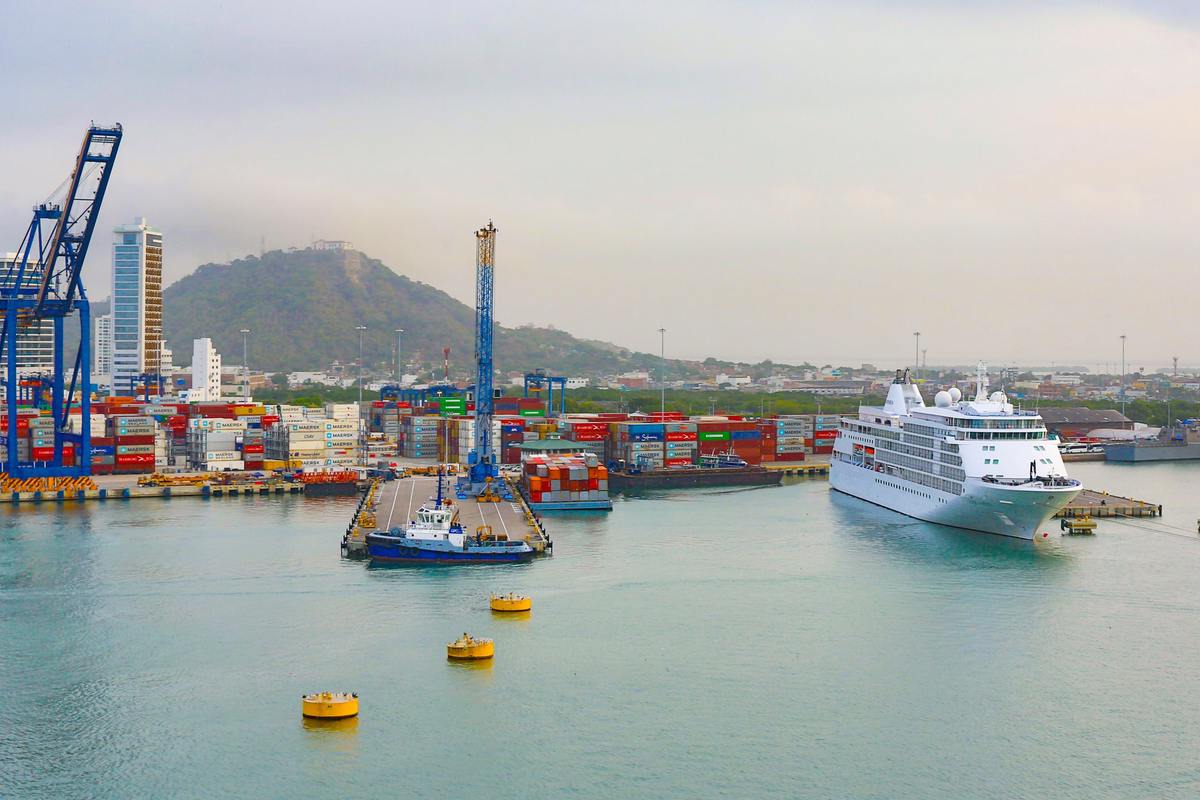Colombia well placed to become green hydrogen production hub – Getting to Zero Coalition
Colombia's renewable energy potential and strategic geographical location make it a prime location to produce green hydrogen for export and bunkering, industry-based Getting to Zero Coalition said.
 PHOTO: Cruise ship, cranes and containers at the pier of the Port of Cartagena, Colombia. Getty Images
PHOTO: Cruise ship, cranes and containers at the pier of the Port of Cartagena, Colombia. Getty Images
“Colombia stands to benefit from international shipping’s shift to scalable zero-emission fuels due to its low potential cost for producing green hydrogen, access to two oceans and ability to leverage renewable energy resources,” a new study by Getting to Zero coalition found.
It recommended the South American nation take advantage of its largely untapped renewable energy potential to produce green hydrogen domestically at a low levelised cost. Levelised cost of hydrogen is the cost of generating hydrogen over its entire lifecycle.
Around 75.5% of Colombia's electricity was generated from low-carbon sources in 2022 and 24.5% was produced from fossil fuels. Currently, Colombia relies primarily on hydropower for its low-carbon electricity, but the report noted it was planning to "diversify its energy mix" going forward. Among the planned energy sources were wind, solar, geothermal, and biomass.
“By leveraging the vast untapped energy potential in solar and wind, Colombia has the opportunity to develop new products including green hydrogen and its derivatives.”
The study also forecast that domestically produced green hydrogen and derivatives – like ammonia and methanol – could eventually replace Colombia's fossil fuel exports, which account for 55% of its total exports, or even be used as bunker fuel.
It cited Colombia's geographic location as a key advantage in green hydrogen trade. “From a maritime perspective, Colombia’s unique geographic position between the Atlantic and the Pacific Oceans and its proximity to key maritime routes enable abundant access to major trading routes and export markets,” the report said.
In addition, it suggested that Colombian ports, such as Cartagena, could be converted to become hubs for bunkering low- and zero-emission fuels in the near future given its proximity to the Panama Canal. According to the Panama Canal Authority, 14,239 oceangoing and small vessels transited the interoceanic highway in 2022, carrying 291 million long tons (295 million mt) of cargo.
However, this would require additional storage and bunkering infrastructure and fuel handling training for port staff, the report concluded.
The green shipping era will benefit developing nations
Shipping experts view the industry's impending switch to greener fuels as a boon for developing nations, since they have abundant land and renewable energy resources. As a result, developing countries will be able to produce green hydrogen at a lower cost and on a larger scale than developed nations.
Commodity trader Trafigura pointed out earlier this year that Colombia and other developing countries in the Global South were well-positioned to produce e-fuels at lower prices.
Trafigura’s whitepaper forecast that if green hydrogen could be produced at $2/kg in Global South countries, the estimated cost of e-fuels produced with this green hydrogen as an input should be around $750/mt. This was compared to e-fuels production cost estimates of $1,200-1,500/mt in Europe, where high renewable electricity prices push up overall production costs.
Meanwhile, International organisations including the IMO and International Energy Agency have endorsed Argentina, Chile, India, and Oman as potential beneficiaries of shipping sector's green transition.
By Konica Bhatt
Please get in touch with comments or additional info to news@engine.online





